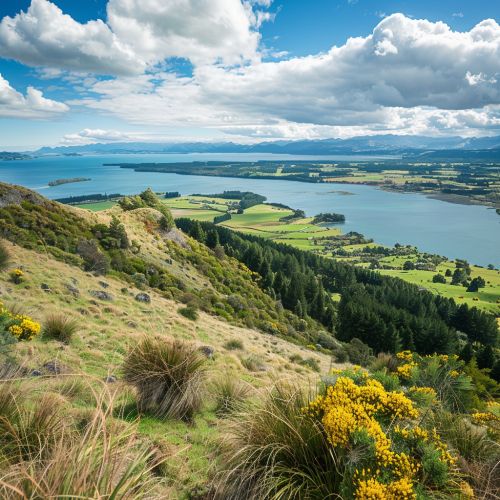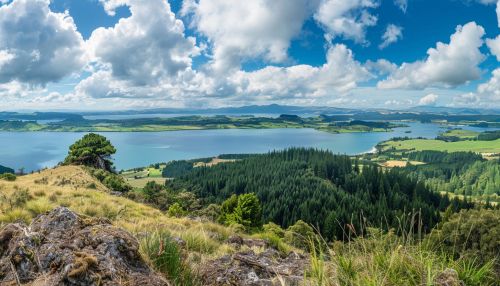Lake Taupo
Geography
Lake Taupo is located in the North Island of New Zealand, in the caldera of the Taupo Volcano. It is the largest lake by surface area in the country, covering 616 square kilometers. The lake's main outlet is the Waikato River, and it drains into the Huka Falls. The lake is a popular destination for recreational activities, including boating, fishing, and swimming.


Geology
The lake lies in a caldera created by a supervolcanic eruption approximately 26,500 years ago. This event, known as the Oruanui eruption, was one of the world's most violent volcanic events in the last 70,000 years. The eruption ejected an estimated 1,170 cubic kilometers of material and caused a global volcanic winter. The caldera later filled with water, eventually forming Lake Taupo.
Flora and Fauna
Lake Taupo supports a diverse range of flora and fauna. The lake is home to several species of trout, including rainbow trout and brown trout, which were introduced to the lake from North America and Europe. Other native species include the common bully, smelt, and longfin eel. The lake's birdlife includes the black swan, mallard duck, and the native New Zealand scaup.
Recreation
Lake Taupo is a popular destination for a range of recreational activities. The lake's clear, clean waters make it a popular spot for swimming, boating, and fishing. The lake is particularly renowned for its trout fishing, which attracts anglers from around the world. Other popular activities include kayaking, sailing, and water skiing.
